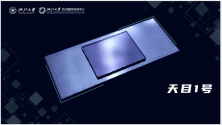Heck even transitioning to FETs was a bit of last minute save for the industry (and lots of fabs were not able to make that jump). It’s kind of remarkable all the little tricks they’re figuring out to keep field effect transistors still relevant at smaller and smaller feature sizes but at some point I think they’re going to run out of things they can pull from that magic hat.there's also the . at some point simple die shrinks or even new transistor designs may not be enough to deal with the problems of thermal stress and leakage voltage. there will need to be new paradigms such as 3D packaging, , , etc.
Personally, my money is on photonics making the leap into logic processors in the next ten years. I’ve been watching people in the silicon photonics space slowly edging their way into designing photonics based logic circuits. If that’s the next leap though it will change everything about the factors of competition, and break open the field for those who couldn't get into the node shrink game.


